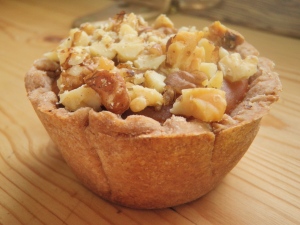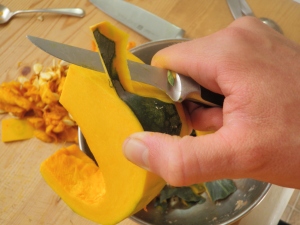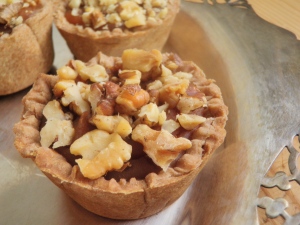Tuesday, 12 January 2010 at the Macrobiotic Cooking Club
There are certainly more solid parts per million in my breakfast French press than in a bowl of miso broth. But, coffee isn’t broth, no matter how thick, and so miso remains the simplest, most energizing soup I know.
The traditional base for miso soup is dashi, which is made from bonito (flaked dried fish) and seaweed. Its flavor is delicate and delicious. Aveline Kushi writes that, ideally, soup does contain both sea vegetables and either miso or tamari, “which simulate the salty composition of the ocean from which primitive life evolved.” (Aveline Kushi’s Complete Guide to Macrobiotic Cooking for Health, Harmony, and Peace).
Don’t let dashi-making deter you, though. Use good unpasteurized miso (typically sold in 4- to 16 oz. tubs or jars from refrigerated cases in health food stores) to turn even plain water into a satisfying soup.
Ryan taught me the best way. My cookbooks have recipes for batches of four or more helpings, but if you’re cooking for one or two it’s better to soup miso by the bowl. Made with rough and aged South River miso, this broth is the most satisfying light meal there is. Serve it with thick bread or brown rice.
Simplest Miso Broth
per bowl
1-3 teaspoons miso
boiling water, left to cool for a few moments
scallions, rinsed and sliced thin (green and white parts)
1. Put the miso in your soup bowl and mix in a little warm water to soften it. Gradually add more water until the miso is the texture of mustard. (This should take less than 1/4 cup water).
2. Add hot water, a few moments off the boil; use as much water as you want soup. Stir the diluted miso and the water together and top with sliced scallions.
Note: The amount of miso depends on your taste, the type of miso you are using, and the amount of water. Only experimentation will determine the amount you’ll like best.
Seasoning With Miso
Besides making a meal on its own, miso is good for seasoning any soupy dish or broth you have. We mixed miso into the seitan cooking water last week at cooking club. The seitan was cooked in broth seasoned with tamari and dulse, tasting like the sea, and just a couple of teaspoons of chickpea miso made it into soup.
Soften miso as for soup, and add it to cooked beans for a savory treat. Miso may also be diluted and poured over greens or other vegetables as they cook, although it is best not to boil miso if you can help it. When miso boils, the flavor doesn’t change but the living ferment is destroyed.
Consider the saltiness of miso when seasoning with it. Some dishes may require both sea salt and miso for the proper flavor, while others will taste just right with only miso. Try some of your miso plain or on a slice of toast to find out just how salty it is.
The reason for diluting miso with a little of the water before adding it to soupy dishes is, if you do not dilute the miso it stays lumpy. The Sous Chef at Pure Food & Wine used to add wads of hatcho (soybean) miso to family meal soups, for heartiness. He did not temper the miso, though, so the soup was mostly bland but with biggish lumps of concentrated salty flavor in a few of our bowls.
Besides Chickpea Miso in Seitan Broth, at the Twelfth Meeting of The Macrobiotic Cooking Club, we had:
Carrots Baked Fish Style
Rolled Sushi with Seitan, Cucumber and Sprouts
(Green Tea)









 As with pumpkin pie, this is better cold, so make it ahead. Alternatively, chill the filling and eat it like pudding. Damn.
As with pumpkin pie, this is better cold, so make it ahead. Alternatively, chill the filling and eat it like pudding. Damn.
Arugula with Curly Endive, Celery Root and Walnuts
Tuesday, 5 January 2010 at Macrobiotic Cooking Club
Boxed greens are irritatingly convenient, but it is muddy bunched arugula and feathered heads of curly endive that are irresistible. For a small winter salad, the task of cleaning them is not so tedious after all. I learned from reading Deborah Madison’s The Greens Cookbook and The Savory Way. Madison admits of pre-washed greens’ contribution to a speedy salad, but encourages her readers more towards garden toil and countryside gathering. Far from being a nuisance, “Handling the tender, delicate leaves,” she says, “…is one of the keenest pleasures in the kitchen I know.” (The Savory Way)
To make eight small salads:
1 smallish celery root
1/2 teaspoon salt
1 bunch arugula
1 head curly endive
3-4 Tablespoons raw walnuts (halves/pieces)
3 teaspoons fresh lemon juice (about 1/2 lemon)
3 Tablespoons tamari soy sauce
1/2-1 teaspoon toasted walnut oil
1/2 cup cold water
(Heat the oven at 350 degrees F to toast the walnuts.)
1. Peel the gnarly outer layer off the celery root. Use a vegetable peeler to make thin shavings of the inner root. Toss the shavings in salt and set them aside in a small bowl to ‘quick pickle’ while you prepare the rest of the salad.
2. Wash and dry the arugula, removing any tough stems and wilted or yellow leaves. Trim the base off the curly endive and wash and dry the frilly leaves. Set these aside while you prepare the walnuts and the dressing.
3. When the oven is heated, toast the walnuts just until crisp and very lightly brown. Check them every 5 minutes, as they are easy to burn. Once they are toasted, set them aside to cool while you prepare the dressing.
4. This light dressing is based on Aveline Kushi’s Tamari-Lemon Dressing. Combine the lemon juice, tamari, walnut oil and water. It is easy to shake them all in a jar together, then store any extra dressing in the same jar.
5. Add cold water to the bowl with the celery root and swish it around to wash off the extra salt. Taste it and rinse again if it is still too salty. Drain off the water.
To Serve:
1. Divide the curly endive between eight small plates.
2. Toss the arugula with dressing to taste. Divide it between the plates, mounding it atop the endive. Use half again as much arugula as endive.
3. Place several strips of quick-pickled celery root atop the arugula on each plate; to equal about 2/3 the volume of endive.
4. Roughly chop the toasted walnuts and sprinkle them onto the salads.
About Celery Root and Curly Endive
The French enjoy both of these vegetables. Flying to Paris from New York aboard an AirFrance airplane, I tasted celery root for the first time. Shredded and dressed, as it was, in vegan remoulade, it tasted like a delicate and string-less version of the ribby, stalk celery. It is actually not the same vegetable at all, but, according to Larousse Gastronomique, an entire other “…variety of celery grown for its fleshy whitish root, which can weigh…(1 3/4-2 1/4 lb).” In France, it is called celeriac, or celeri-rave.
Celery root is adaptable to cooking styles ranging from the near-raw remoulade and quick pickle, above, to steaming, braising or stuffing. Curly endive, however, with its “very thin and serrated” leaves, is “…eaten mainly in salad.” (Larousse Gastronomique). The Chef at a French restaurant I worked in pointed it out in the salad mix we used, saying he wished he could buy it alone. Similarly, many American restaurant guests pick it out of the salad mix and leave it on the corner of their plates. To each their own, as they say. Those who wish to buy curly endive alone should look at Whole Foods, where I chose mine from a row of the small, individual heads. It may also be called frisee or chicory.
Four of us cooked and ate at Meeting Eleven of the Macrobiotic Cooking Club. In addition to salad, we had the following:
Red Lentil Dahl
Arame and Onions
Brown Basmati with Spinach
(Red Wine and Green Tea)
Next week we’re making sushi.
1 Comment
Posted in Food, reviews, critiques, and commentary, Salads, Vegetables
Tagged Aveline Kushi, Cooking Club, Quick Pickles, Root Vegetables, salad, Walnuts